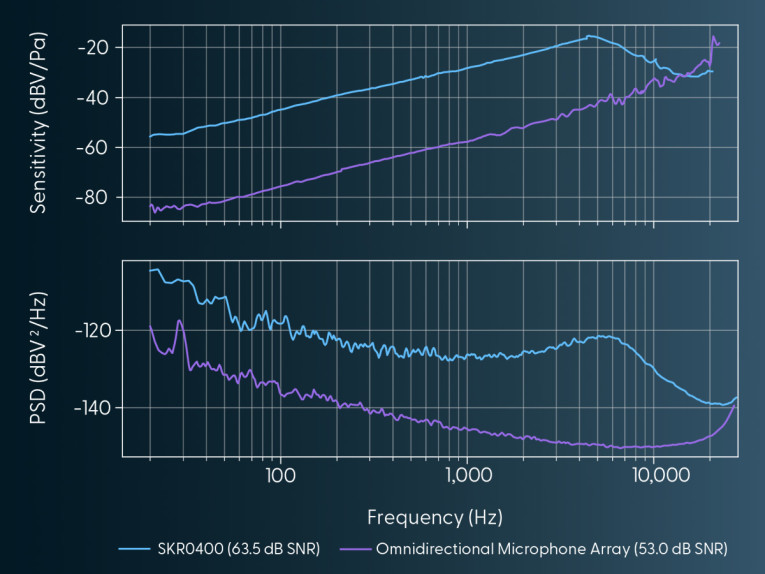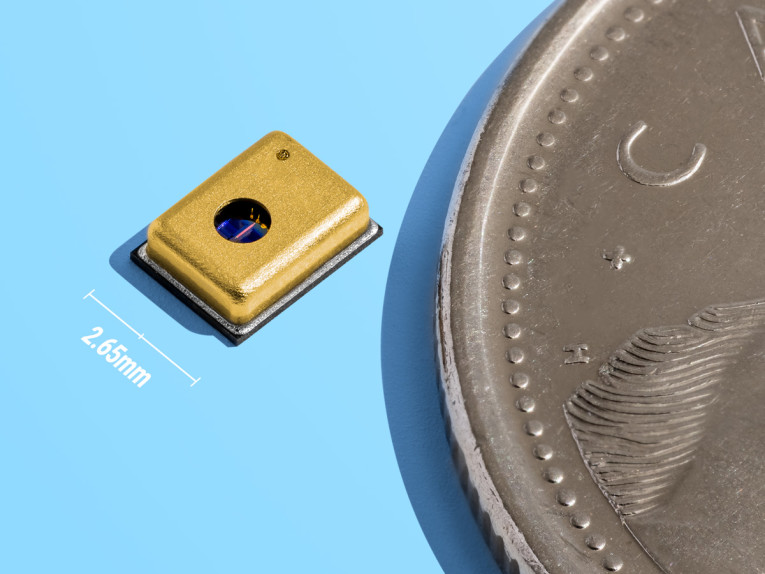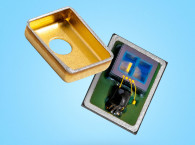
Soundskrit is an audio technology from Canada, with an ambitious roadmap to combine cutting-edge hardware and software and pave the way for new levels of consumer audio experiences. Soundskrit was founded at the startup incubator TandemLaunch, where the three initial founders connected with Professor Ron Miles of Binghamton University and were introduced to a new perspective on MEMS microphones, one grounded in over 30 years of research. Rather than use arrays of non-directional microphones to try and get directionality, why not build the directionality into the hardware itself? These new MEMS microphones were inspired by spiders, which utilize its hairs and webs as “sensors,” responding directly to the motion and flow of air around them to "hear". In fact, the very first prototype microphone actually used a spider web as the sensing diaphragm!
As the technology moved well beyond those early days, Soundskrit managed to significantly miniaturize the first prototype without sacrificing any capabilities to create the highest performance MEMS directional microphone on the market. But while the Soundskrit microphone has shrunk to become a miniaturized MEMS device ready to support applications in the smallest designs, the team has grown, with offices in both Canada and the United States and a multitude of team members from diverse backgrounds.
Now, Soundskrit finally confirmed availability of their first product, the SKR0400 directional MEMS microphone, leveraging a new transducer design for maximum audio performance, combined with proprietary software that optimizes the audio experience for a wide range of devices and use cases in any environment. Microphones in devices including laptops, webcams, smart speakers, connected TVs, headsets and earbuds, AR/VR, medical devices, wearables, and connected vehicles are all potential application fields.
One single high-performance SKR0400 microphone is able to isolate a person's voice while eliminating any other sounds and noise surrounding it, to provide a pristine and high-quality audio output. Applications with multiple users/voices are also possible and have been demonstrated, as well stereo separation of sound sources, with a single microphone, only using software processing.
Moving Audio Performance Forward
Audio quality from microphones has never been more important for consumers. The proliferation of video meetings and remote work; the rapid adoption of smart home, health devices and smart vehicles; the advent of augmented and virtual reality headsets, and introduction of True Wireless Sound (TWS) with capabilities such as voice calling active noise cancellation, transparency mode, spatial audio playback, etc., have all raised the bar for consumer expectations around audio quality and today’s microphone technology.
To date, consumer devices have had to use arrays of multiple omnidirectional microphones which struggle to isolate a desired voice from unwanted background noise, providing limited performance. And they do so at the cost of increased real estate, power consumption, and complexity. While traditional audio processing software attempts to find meaning out of all the noise, it can only go so far, removing key pieces of speech as it tries to filter out the unwanted noise leaving only an unnatural and distorted speech signal behind.
The SKR0400 directional MEMS microphone inherently eliminates unwanted noise at the hardware level using a highly directional pickup pattern that significantly reduces background noise and reverberation, isolating a user’s voice with high-fidelity. Soundskrit believes its solution to be the industry’s lowest noise directional MEMS microphone, since it eliminates the need for large omnidirectional microphone arrays (where each additional microphone adds to the noise levels and reduces SNR) providing a small, low power, and lightweight solution with incredible performance. With minimal signal processing it enables a breadth of features from noise and echo reduction, true stereo recording for highly immersive audio content, and voice tracking.
"We experienced and saw the need for elevated audio without compromises - high performance, pristine sound, and that engineered new ways for humans to experience sound and not necessarily in the same manner we process sound ourselves," says Stephane Leahy, Vice President of Hardware and Co-founder of Soundskrit. "We needed to create something small and directional, so we took inspiration from the smallest auditory systems in nature. We’ve created a microphone that truly isolates a speaker’s voice and delivers the highest-quality sound. We’re not stopping at just one microphone, Soundskrit is building and engineering audio for the future."
Inspired by how insects process sound, Soundskrit’s audio sensory technology responds to air flow rather than pressure. Soundskrit drew inspiration for directionality in a small form factor from these sensing systems, which nature perfected over thousands of years. The SKR0400 microphone transducer was designed from the ground based on these principles, to improve performance in directional microphones. By moving in sync with the surrounding air motion (sound) the transducer is able to accurately sense an incoming sound wave and convert it into a high-quality electronic signal.

The SKR0400 is an analog, directional MEMS microphone (63.5 dBA SNR) with a dipole pickup pattern for acoustic background noise rejection and superior signal isolation. This directionality allows for clear pickup of the desired signal with minimal signal processing even in noisy environments. Just two Soundskrit SKR0400 microphones provide the same prowess as four omnidirectional microphone arrays. Add to that a lighter DSP chipset, shorter signal path, better performance and an easier product design to work with, and OEM’s can save on costs while addressing design constraints and time to market. All within the microphone size standards established by the industry.
Soundskrit also developed in-house AI engine - based on a deep understanding of acoustics around directional microphones and the latest advancements in neural networks - to unlock the full potential of the SKR0400 and bring a pallet of new features to developers. Soundskrit's SimplyClear software includes proprietary building blocks, compatible with both single and multi-microphone arrays.
When the microphones are oriented in different directions, the software unlocks a new feature set that cannot be replicated using omnidirectional microphones. It eliminates background noise and reverb, tracks multiple speakers around a room, and/or detects the distance of a sound from the microphones so that everyday devices can now isolate voice and truly eliminate unwanted background noise. The software suite enhances today's solutions and provides the framework for future improvements.
OEMs interested in learning more about Soundskrit’s technology or getting their hands on a development board can now try the technology for themselves.
www.soundskrit.ca








